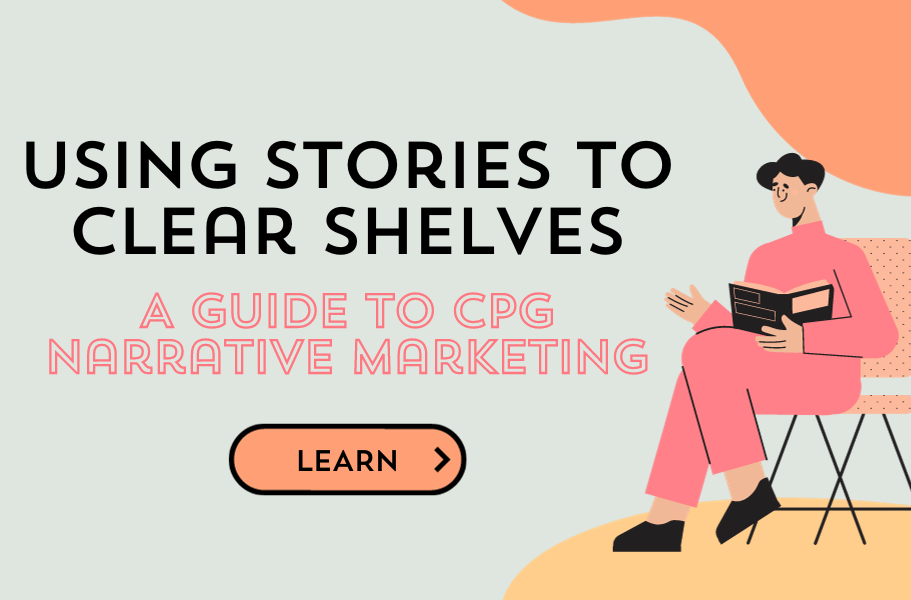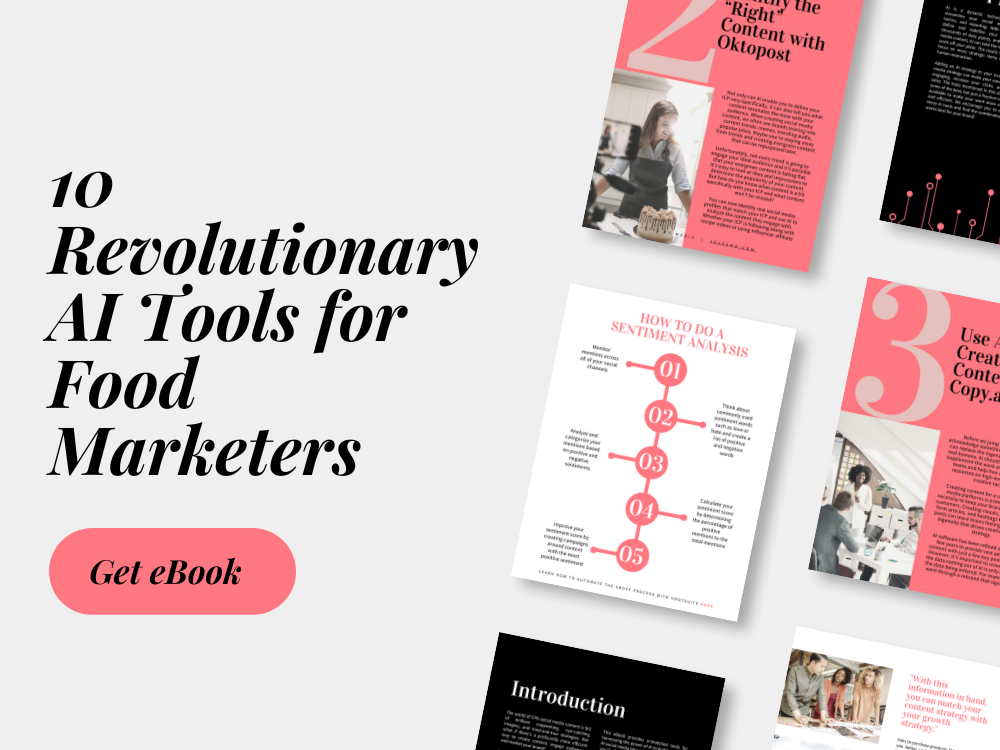Life is selling. Despite what many of us have been groomed to believe – there is truth in that statement. We sell ourselves for every pay raise, we sell our kids on eating their vegetables, and we sell our partners on spending a lifetime with us. And when it comes to being an entrepreneur, there is no success without selling. If you’re a CPG founder, this post will help you make some of the most important sales of your life – the pitch to your team, retailers and investors.
Types of CPG Pitches
There are three main types of CPG pitches. The core of these pitches are the same, but each has nuances that are crucial to success. Let’s take a look:
Team Pitch: Pitches to your internal team are pivotal to alignment, motivation and growth. The goals of these presentations are to review past performance and discuss your plans and goals for the future. These points may be specific to each department in your company or a general overview of the entire company. How did you do on your marketing campaigns, revenue, and profit in the past quarter? What strategies will be employed for the next quarter? What targets should you all align to hit? As a founder, your job is to remind your team of your shared failures, successes, values and mission consistently and with enthusiasm.
Investor Pitch: If you’re seeking capital for your business, you will need to perfect this pitch. When it comes to pitching to investors, your story and mission will be important but investors will be viewing your business from an ROI perspective. Data will be a big piece of this pitch to ensure the investors understand why it makes business sense to invest in your CPG company.
Retailer Pitch: Whether you’re looking to have a retailer carry your product for the first time or expand your shelf space – you will need to pitch them on your ask. Similar to the investor pitch, data will be essential for retailer pitches. However, during this pitch, you should focus more on the retailer’s motivations, the local market, and the retailer’s shopper marketing programs.
Now that we have the three types of pitches laid out, we’re going to dive next into the specificities of the pitch decks you’ll be creating – particularly for investor and retailer pitches. While team pitches are important, they can be more flexible in their structure as they are presented only within your organization. In other words, you can create team pitches however you see fit. For investor and retailer pitches, there are models to be followed. Firstly, because most investors and retailers will expect it. Secondly, because these are the models that have proven to be successful.
Questions to Answer
All great pitch decks answer a set of foundational questions. They tell the investor or retailer who you are, why you started the business, the problem you’re solving, and how you’ll solve it. Paired with these key points will be data that shows the market opportunity, your company’s traction thus far, as well as, your financials and plans for growth.
To make sure you provide all of the necessary information, answer the following questions in your slides.
Why are you doing this? What is your company’s mission?
What problem are you solving?
Who are you solving this problem for? Who is your target customer?
What is the size of your target market? What’s trending in your category?
What are your products?
How are your products different from others on the market?
What are your numbers (basic financials, traction, press, following, etc.)?
What are your projections for the future?
What is your marketing strategy?
Now, let’s take a look at a real pitch deck by Copper Cow Coffee and how it answers these questions. As you look through the slides, note that the slides themselves should only provide key points and visuals that can be easily understood at a glance. A big piece of the pitch (and the answers discerned below) came from the presentation by the founder and team.
Why are you doing this? What is your company’s mission? Debbie, the founder of Copper Coffee, has roots in Vietnam, and wants to share her culture with others through Vietnamese coffee
What problem are you solving? To make high-quality, Vietnamese coffee accessible to everyone, and in a sustainable way.
Who are you solving this problem for? Who is your target customer? American craft coffee drinkers
What is the size of your target market? What’s trending in your category? The American coffee industry is a $32 billion market
What are your products? Vietnamese coffee
How are your products different from others on the market? Specialty coffee from Vietnam, sustainably sourced
What are your numbers (basic financials, traction, press, following, etc.)? $80K in revenue in June 2018 with 45% margins, carried in 2,000+ stores
What are your projections for the future? Tackle new revenue opportunities in offices, hotels and eCommerce
What is your marketing strategy? Educating the customer about Vietnamese coffee, organic farms and sustainability
Of course, there is only so much we can ascertain from the slides without having been in the actual pitch room. But it’s safe to say that the slides simply served as the building blocks for a larger, more detailed narrative and explanations within each point mentioned above.
Interested in seeing more startup pitch decks? Check them out here.
Slides Outline
When it comes to the topical outline of the pitch deck, much of the deck should answer the aforementioned questions. Where the slide outlines diverge will depend on whether you are pitching to an investor or a retailer.
Local vs Global Market
If the retailer is in a certain region of the US or would likely start you off in a single store, it’s important that you research the respective local market. Include data points about the region’s demographics, habits and dietary preferences. Show the buyer that your consumers are the same as their consumers.
For investors, they’ll care more about your company’s ability to scale to the larger market. What are your market opportunities on a national or global level? What is your plan to get your company there? How will you use their funds to fuel that growth?
Motivations
Both retailers and investors are in the business of making profits. However, how they want those profits to be made, to what extent, and their overall motivations are quite different. Your pitch needs to speak to the specific audience’s motivations.
Retail buyers have incentives that are typically aligned with category performance. That is, these folks care about whether your product will bring new consumers into a given category. For example, if your plant-based dairy products bring in customers who have never tried vegan dairy before, that is a win for them.
Retailers also care about moving high volumes of product on thin margins. Come prepared to discuss your plans for getting your products sold during your retailer meeting. Will you be providing coupons, offer training to salespeople, create product pairings, or execute field marketing programs? Research your competitors’ programs ahead of time to show how you can drive sales.
For investors, their motivations are mainly to get a return on their investment. They want to know whether your company makes business sense and if the market opportunity is substantial enough to warrant their resources and attention. How drastic your product’s differentiators are from competitors, the scalability of your operations, and your company’s overall profitability will be main areas of focus for investors.
Other Differences
For both retailers and investors, they will want to have a look at and likely taste your product. However, retailers will want to get a close look at the packaging and point-of-sale display.
An area of difference for investors will be that they’ll want details about how their investment will be spent. This information can be presented as one of the closing slides where you include the ask for the investment amount and provide insight on how those funds will be allocated.
Take a look below at how the investor deck outline and retailer deck outline will ultimately pan out.
Craft Your Pitch
Now that you understand the core elements of each type of pitch, it’s time to craft yours. Before you start, keep some key tenets in mind:
The pitch should be no more than 15-20 minutes in length
The presentation should give just enough information to pique interest
The slides should be easily understandable at a quick glance
Be simple, direct and concise – use plain English, no jargon
Bring your product to demo and extras in gift bags to leave behind
Leave at least 15-30 minutes at the end for questions
It’s time to craft your pitch. Follow the steps below to learn how to create the perfect pitch from start to finish.
Draft a Rough Outline
Using the questions and outlines in the previous sections, write out your narrative as a list of 10-15 bullet points. Under each bullet point, list a data point to support your statement. Each bullet point should serve as a single slide.
The bullet point should serve as the slide’s title with the data point as the supporting content. No slide should have more than one point. If you’re making more than one point per slide, you’ll need to simplify.
Then, list out all of the potential questions that may be asked, especially those that might require you to reference data points. Write down your answers and learn them by heart.
Create Basic Slides
Pull the information from your outline above into bare minimum slides. Don’t worry about the design at this point. Just open up Google Slides or Powerpoint and start creating your slides. Make sure your points are clear, concise and straight-forward.
For many of these professionals, particularly the investors, their time is their currency so everything you present should be very easy to understand in little time.
Design or Select a Template
Once the content of your slides have been refined and perfected, it’s time to make them beautiful, engaging and on-brand. There are many ways to design a slide deck, ranging from free options to bringing on a costly agency to do it for you. For those of you working on lean budgets, below are some resources to consider.
Completely free: Slides Carnival
Subscription: Canva
Pay per template: Creative Market
With your design all set, flesh out your slides with appropriate colors, graphics and professional photography. If you need help in the photography department, check out these resources:
Completely free: Pexels
Subscription: Envato Elements
Professional & custom: Julee Ho Media
Note that stock imagery is a good option for tiny startups but the downfall is that everyone else uses the exact same images. If you want your company and products to stand out, reach out to us here. We specialize in CPG photography!
Practice Your Pitch
A well crafted pitch deck provides your presentation with great bones. However, it is what you say that will make all of the difference. The best way to practice your pitch is to do it with people you trust. If possible, connect with colleagues who have experience with pitching to retailers or investors. If that’s not an option, rehearse in front of friends and family. In any case, here’s what you should ask them:
Was any part of the pitch confusing?
Was any part of the pitch boring?
What hard questions would you ask me as an investor / retailer?
Of course, for the first two questions, you’ll want some additional context in order to make the proper adjustments to your presentation. For the third question, research the answers and ensure you are prepared for them.
Final Thoughts
We covered many different components of a CPG pitch in this post, each with many more details. It’s a lot to research, learn, produce and practice. That said, if there is any one point to take away from this piece, it is to truly understand your audience.
Learn about each investor’s background, research their portfolio clients, immerse yourself in what retailers care about and study the local markets. The more educated you are and the more relevant data you collect, the further you’ll go.
Best of luck on your CPG journey from all of us at Julee Ho Media! We can’t wait to see your brand on the physical and digital shelves!
Want more content like this? Subscribe to our monthly Food Marketing Newsletter!
More resources:
Julee Ho Media is a boutique food photography company specializing in remote photoshoots for CPG brands.



















